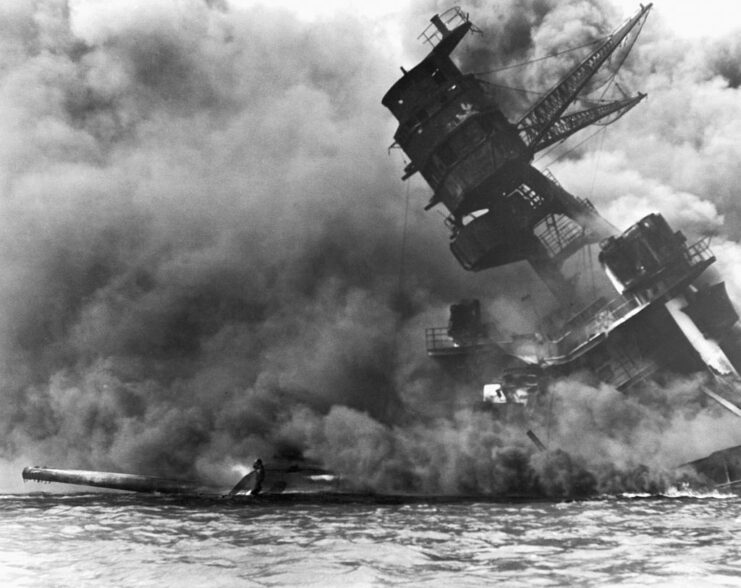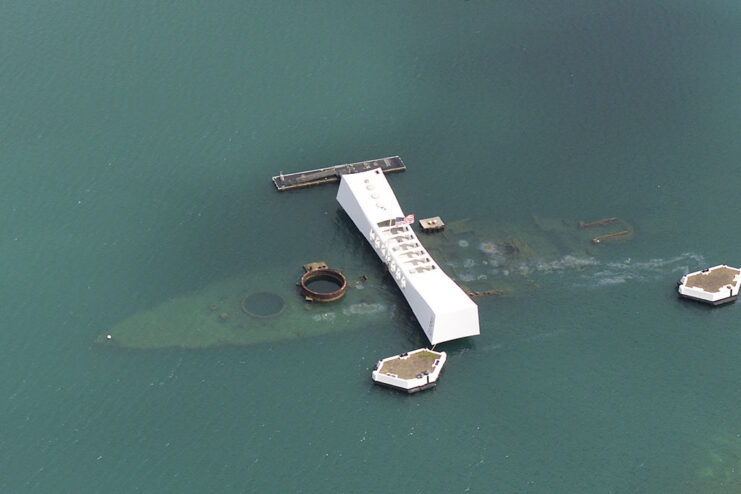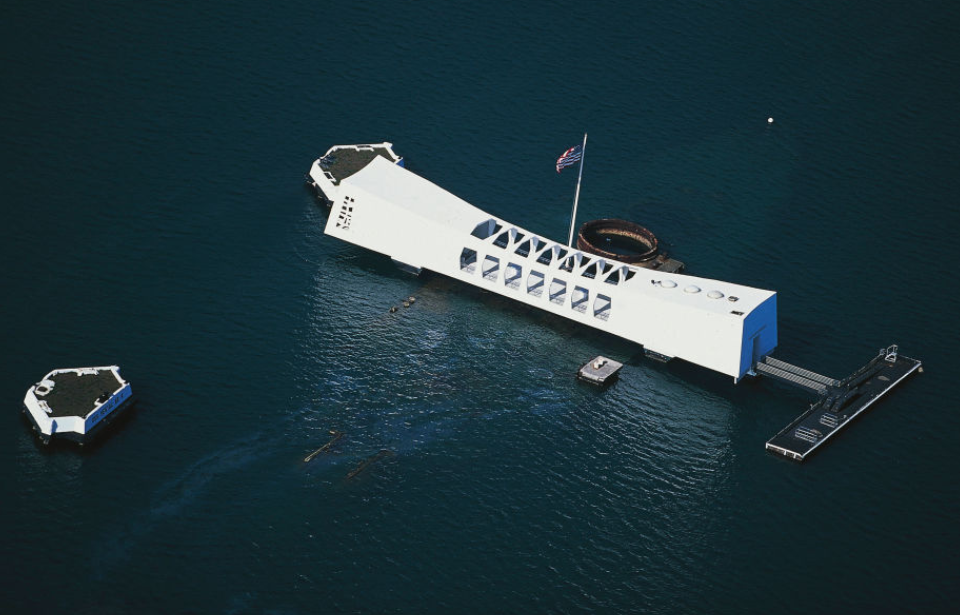The USS Arizona (BB-39), a Pennsylvania-class battleship named for the 48th state, joined the U.S. Navy in the 1910s and quickly became a proud emblem of America’s maritime power through peace and conflict alike. Yet its legacy would be forever defined by tragedy. On December 7, 1941, amid the surprise Japanese assault on Pearl Harbor, a bomb pierced the ship’s forward magazine, igniting a massive explosion that claimed the lives of more than a thousand sailors and Marines within moments.
In the years that followed, a moving tradition emerged: surviving crew members were granted the choice to have their remains interred within the sunken vessel after death. This solemn gesture allowed them to return to their shipmates in the resting place where their service had ended. Today, the Arizona still lies beneath the harbor’s waters—a sacred memorial and enduring symbol of sacrifice.

Arizona was the second and final ship of the Pennsylvania-class “super-dreadnoughts,” commissioned in 1916. Though built for battle, she never saw combat in the First World War, remaining stateside throughout the conflict. Between the wars, Arizona underwent a comprehensive modernization from 1929 to 1931 and took part in regular training operations, including the Navy’s large-scale “Fleet Problem” war games. In 1933, when a devastating earthquake struck Long Beach, California, her crew stepped in to help, providing emergency assistance to those affected.
By 1940, rising tensions in the Pacific prompted the U.S. to transfer the Pacific Fleet to Pearl Harbor, Hawaii, hoping its presence would deter Japanese aggression. But on the morning of December 7, 1941, that strategy proved tragically ineffective during the attack on Pearl Harbor. Arizona was hit during the surprise attack, and a massive explosion tore through the ship. She quickly sank, killing 1,177 of her crew.
While many of the vessels damaged that day were repaired and returned to service, Arizona was beyond recovery. Though some components were salvaged for use elsewhere, the main body of the ship was left in place—becoming both a war grave and one of America’s most enduring symbols of sacrifice.

The wreck of the USS Arizona still lies beneath the waters of Pearl Harbor, serving as a haunting symbol of the devastation of December 7, 1941. Rising above it stands the USS Arizona Memorial, formally dedicated on May 30, 1962. Millions visit the site each year to pay their respects—but few realize that, after the crowds depart, deeply personal ceremonies have often unfolded there in silence.
Many of the Arizona’s survivors went on to long, meaningful lives—some continuing their military careers, others finding new paths in civilian life. Yet for those who wished to return to their ship for a final homecoming, a poignant ritual made it possible. Upon their deaths, their ashes were placed in special urns, set aside for a private ceremony beneath the waves.
When the memorial closed for the evening, loved ones gathered quietly alongside a Navy honor guard. As the solemn strains of “Taps” drifted over the harbor, divers slipped into the dark water, bearing the urn toward the wreck. Near the #4 gun turret, within the corroded steel of the battleship, the veteran would join their fallen shipmates once more—laid to rest where their story had begun over eight decades ago.
More from us: The US Military Once Built a Japanese Warship in the Middle of the California Desert
It was a truly touching tribute to those who served in defense of the United States. Sadly, the last Arizona survivor, Lou Conter, passed away on April 1, 2024, at the age of 102.
